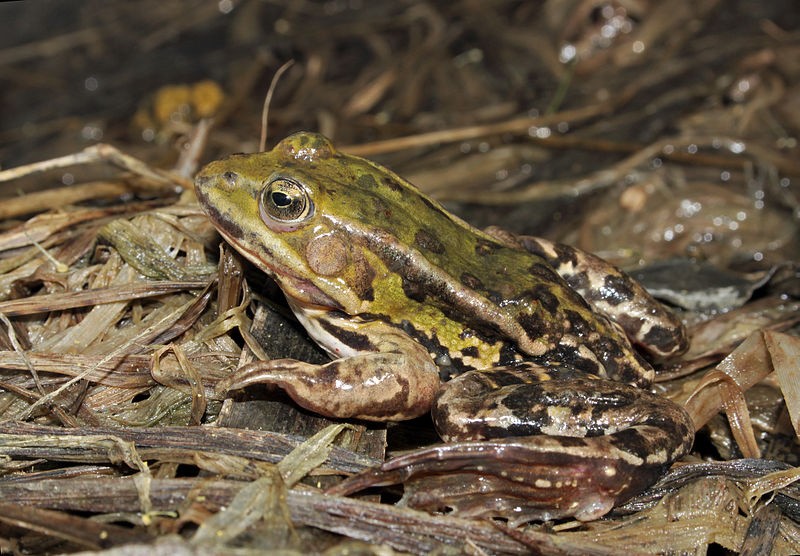Pelophylax lessonae, the northern pool frog, is one of the most endangered amphibians. The species' value to Britain was first realized in 1995 after going extinct in the UK.

Thanks to a reintroduction campaign, the population is currently prospering once more.
Bringing the Frogs Back
With the only known populations in Estonia and Sweden, bringing frogs from Sweden to re-establish a colony required special approval. These have reproduced so well that stock from the original location is being utilized to start new breeding populations.
Last year, the Amphibian and Reptile Conservation Trust produced tadpoles in special tanks and released 542 into ponds at Thompson Common in Norfolk, with the highest success. Natural ponds were cleaned of surplus vegetation to build the ideal environment, and as a consequence, additional species prospered.
The pool frog, unlike the ordinary frog, Rana temporaria, which has already placed its eggs, waits until the water heats up in May and June to lay its eggs. The spawn is placed in smaller clumps, and the males make a lot of noise with specific pouches on either side of the neck. The frogs, with a characteristic stripe down their backs, resume sunbathing in the summer heat after reproducing.
Essential in Conservation
Bringing back native species, from beavers to butterflies and everything in between is essential for re-establishing natural processes and repairing ecosystems.
Following its extinction 400 years ago, there are presently around 1,000 beavers living wild in Britain's rivers and streams. They were legally brought to Knapdale, Argyll, and unofficially to Perthshire and Devon, where they now have legal status and thriving populations. More people are being allowed to return to enormous enclosed enclosures across England, and the number is rising. It's a beautiful narrative of species reintroduction that continues to enthrall the public.
Reintroductions

In general, reintroductions thrill and inspire. They're a component of the rewilding tale that everyone wants to know more about, especially now that we're talking about reintroducing extinct predators. Restoring natural processes and helping ecosystems operate requires the return of species.
Over the decades and centuries, many species have vanished from Britain. Many keystone species, such as the wolf, wild boar, beaver, lynx, bear, and white-tailed eagle, were driven to extinction (see Keystone species and trophic cascades). Many more species of fauna and flora (terrestrial, freshwater, and marine) have been eradicated or drastically reduced in abundance on these islands and seas. In England alone, an estimated 413 species of flora and wildlife have gone extinct in the last 200 years, with the majority occurring in the previous century.
Proxy Species
Introducing animals as proxies for lost herbivores, such as native cattle, ponies, and pigs, is extremely simple - no specific reintroduction licenses are necessary. When their environment is restored, some creatures will return on their own. Removing grazing pressure from forests to let them recover, or restoring a wetland, may reintroduce many insects, birds, butterflies, and animals. The Iberian lynx is steadily re-establishing its habitat and prey base (primarily rabbits) in Portugal.
Related Article : Tequila Fish Reintroduction Shows Glimmer of Hope to Conservation
For similar news, don't forget to follow Nature World News!
© 2025 NatureWorldNews.com All rights reserved. Do not reproduce without permission.





